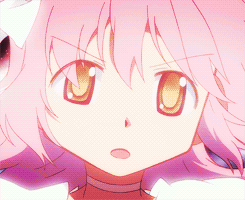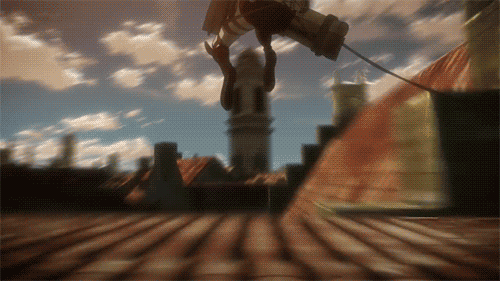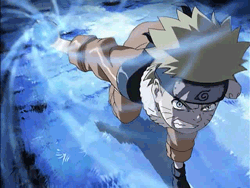Are you familiar with the term anime? Some people
are, some people aren’t. Or they’ve heard about it, but don’t know what it
really means. Anime is the shortened version of the term “animation” and in
layman’s terms, anime is Japanese cartoons. But to those who are acquainted
more intimately with anime, the word anime has a more special meaning.
In TV shows, you are constrained by several factors. Things like budgets can make
special effects laughably horrible. Bad acting can make strong dialogue weak
and awkward. TV shows can come off as cliché or “been there, done that.” You
have to worry about cameras and lighting and bad weather ruining shots. Actors
may be injured or have issues with onset conditions.
In
anime, you have more options. You don’t have to worry about actors being
disturbed by intense heat or cold. Your voice actors are in a controlled
environment: the studio. If you want to create a technological, futuristic
world, you can do so with the same budget as if you chose to do a “slice of
life” anime, which is an anime that is realistic and doesn’t employ anything
like magic or other supernatural elements and is thus a “slice of real life” (usually
set in or around a high school setting). Sports anime, or anime focused on a particular sport such as Kuroko's Basketball or Haikyuu!! (volleybakk), are similar to slife of life, since sports anime typically don't include magic. Typically.
As
far as setting and location, you can go anywhere. You’re limited only by how
well you can draw and animate. You don’t have to fly out to Ireland and film in
a beautiful location. You can draw a beautiful location and what’s best is that
you can draw places that don’t exist. Anime eliminates the hardships of
live-action sets and special effects and budget issues by being less expensive
and looking much better, much less cheesy than a TV show.
The irony being that 2-D effects can look more
realistic than live-action effects simply because the human eye is highly
attuned to artificiality. Try watching the old Godzilla movies or modern shows
with bad budgets like Lost Girl or children
shows with charmingly bad effects like Wizards
of Waverly Place.
Then try watching Puella Magi Madoka Magica and tell me which one looked dorky and embarrassingly fake.
You can portray magic or technology without the
cheesiness or technical difficulties a live-action set would create. You can
also create events that could never be believable in a live-action, such as the
3-D Maneuver Gear of Attack on Titan.
Could you do this in a live-action? They're attempting to, but I'm worried about that live-action movie they've been working on. How could you portray this believably on a real-life set?
In anime, the
quality of “special effects” is as amazing as it needs to be because anime is
only limited by animation budget. If you want a mystical, scenic setting, you
don’t need to fly out to Ireland. You can just draw and animate it and the view
will be breathtaking all the same, without issues like cameras breaking or the
sky being too overcast to shoot anything.
Anime can
appeal to all ages, from little girls fond of the sparkles and magic of the
magical girl show Sailor Moon to the older, to young boys interested in
fighting and adventure with shows like Dragonball and Naruto, to dark shows
with mature themes appealing to older audiences like the recent Attack on
Titan. Anime has many different categories, such as shonen for young boys,
shoujo for young girls, seinen for young adults, and josei for young women.
There are many types of anime. Some
people enjoy the cutesy, child-friendly, more Western-cartoon type of anime,
the kind you may be acquainted with such as Pokemon, Digimon, Yu-Gi-Oh,
Dragonball, Sailor Moon, Slayers, and Fairy Tail.
These types of anime
typically focus on friendship, fighting, and adventure, but usually aren't too violent. Also keep in mind that by "violent", I mean relatively. What Western audience describe as too "violent" for kids is different than what constitutes as "violent" in Japan.
There is a common misconception in the Western world
that anime is either cartoons for kids or weird pornographic material for
perverts. The truth is that anime can be
for kids, teenagers, and adults. Anime like Attack on Titan, a grim show about
survival and sacrifice with hopeless, despair, and dark themes appeal to
teenagers and young adults, while deconstructing the usual shonen themes of
friendship and love conquering all. Anime like Puella Magi Madoka Magica
deconstruct anime clichés such as the “magical girl” by putting a dark spin on
the classic anime genre. Anime like Bokurano deconstruct other genres, in this
case mecha, to the same effect.
For example, Attack on Titan is a shonen anime. This means it's aimed towards little boys from elementary school age to high school age. However, it appeals to teenagers and adults due to its darker content which includes intense drama and violence.
People die in anime. And Attack on Titan has a record for killing a lot of its characters. Even in anime that are less... intense as Attack on Titan, the themes are often a lot darker than cartoons tend to be.
Which is why it tends to piss anime fans off when you call it cartoons. Truth be told, cartoons and anime are the same thing, on a technical level. But fundamentally, they are different. Cartoons are often comedic, humorous. Shows like Ben 10 and Young Justice League and Batman Beyond are humorous, but also include a lot of action and plot that resembles the complex plots you often see in anime. Shows like Avatar the Last Airbender and W.I.T.C.H. are sometimes mistaken for anime, but the reason you don't call them that is because they weren't produced in Japan, but spiritually, they resemble anime.
Anime is something that is difficult for someone who's never seen it before to appreciate. Once you've found your "gateway" anime (an anime serving a purpose much like marijuana as a "gateway drug" to other drugs), you never go back. It's an easy thing to become addicted to, as evidenced by the fact that I chose to write a rant about anime for a school project and far exceeded the minimum word limit. It's not really an addiction you want to break away from either.
Often, I am asked what anime should a first-timer start with.
Hopefully, you already watch anime, but if you don't, I hope my rant has convinced you to give it a shot.
Good ones to start with:
Fairy Tail
Bad ones to start with:
Bad ones to start with:
To be honest, any anime is a bad anime to start with if you go into it without an open mind. The art style might throw you off, reading subtitles might annoy you and there might not be an English dub, and maybe you just won't like it.
I wish anime was mainstream in America, but as it is not, I hope my blog has helped convince you to try it when you're bored and have nothing to do. Hopefully one day you, like me, will end up going from having nothing to do so you're watching anime to watching anime because it's all you want to do.
If you want to talk about anime, contact me at: thewswc@gmail.com
















I love it! NERD POWER haha! It's very detailed and elaborate, and gets down to the actual truth. Great job!
ReplyDeleteLol.
DeleteYeaaahhhhh I've been through my fair share of anime and I met a lot of die hard fans... Its away of life for them.
ReplyDelete